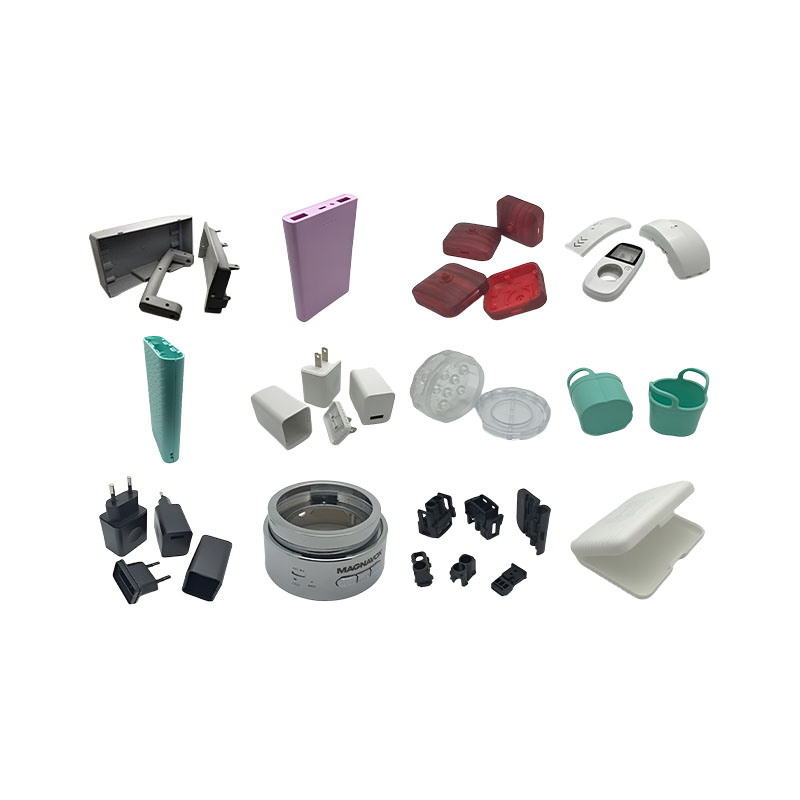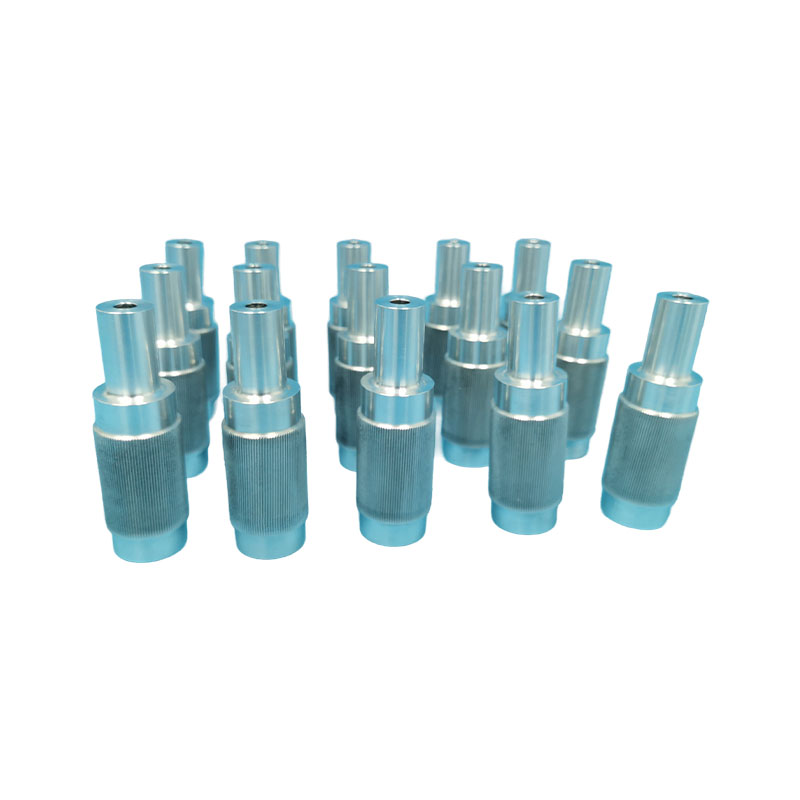What role does various plastic mold processing play in manufacturing?
Release Time : 2025-09-04
In the vast ecosystem of modern manufacturing, various plastic mold processing is known as the "mother of industry," serving as the core link between product design and mass production. From everyday mobile phone cases, home appliances, and automotive parts to medical devices and aerospace components, virtually all plastic products rely on precision design and efficient manufacturing through various plastic mold processing. It is not only a key tool for achieving product molding but also a core factor in determining product quality, production efficiency, cost control, and the speed of innovation. It can be said that the level of various plastic mold processing directly reflects the comprehensive strength of a country or enterprise's manufacturing industry.
1. The "mother" of product molding: The bridge from design to reality
Various plastic mold processing is essentially a customized molding tool whose internal cavity precisely replicates the geometry of the final product. In processes such as injection molding, blow molding, extrusion, or compression molding, molten plastic material is injected into the mold cavity, cooled and formed, and then demolded to produce a plastic product that is exactly the same as the mold cavity. This process transforms a 2D drawing or 3D model into a 3D solid object and is the prerequisite for mass production. Without molds, even the most ingenious designs cannot be realized. Mold precision directly determines a product's dimensional tolerances, surface finish, structural strength, and assembly consistency. For example, in precision electronic devices, housing clips, studs, and thin-walled structures must fit perfectly together; even the slightest deviation can lead to assembly difficulties or functional failure. High-precision various plastic mold processing, through micron-level machining control, ensures that every component fits perfectly, guaranteeing the quality and reliability of the entire device.
2. Core Engine for Improving Production Efficiency and Reducing Costs
In large-scale production, efficiency and cost are key competitive advantages. Various plastic mold processing, particularly multi-cavity and stack molds, can produce multiple parts simultaneously within a single molding cycle, significantly improving production efficiency. For example, a 32-cavity bottle cap mold can complete a single injection molding cycle in just a few seconds, producing 32 finished products, enabling "second-level mass production." This high efficiency not only shortens lead times but also significantly reduces the manufacturing cost per product. Furthermore, advanced mold design (such as hot runner systems) can reduce runner waste and improve material utilization. Conformal cooling technology optimizes cooling efficiency and shortens molding cycles. High-life mold materials and surface treatments extend mold life and reduce maintenance downtime. These technological advances collectively promote low-cost, efficient, and sustainable production of plastic products.
3. Technical Support for Product Innovation and Complex Structures
As consumers' demands for product appearance, functionality, and lightweighting continue to rise, the structures of plastic products are becoming increasingly complex. Advanced manufacturing technologies such as multi-axis machining, electrospark forming, and laser texturing enable the creation of complex features such as free-form surfaces, microstructures, special-shaped channels, and insert molding, providing unlimited possibilities for product innovation. In the automotive industry, the trend toward lightweighting is driving the use of plastics to replace metal. Large bumper and instrument panel molds are not only large in size but also require the integration of complex internal reinforcement ribs and mounting structures, placing extremely high demands on mold rigidity, temperature control, and ejection systems. In the consumer electronics sector, fine surface treatments such as gloss, etching, and leather graining directly determine the product's quality and brand image.
4. A Cornerstone of Cross-Industry Applications: Supporting the Operation of the Modern Industrial Chain
Various plastic mold processing applications have permeated nearly every industrial sector. In automotive manufacturing, over 70% of interior trim and some exterior parts are produced using various plastic mold processing. In the home appliance industry, core components such as washing machine tubs, refrigerator liners, and air conditioner panels rely on large injection molds. In the medical field, disposable syringes, infusion sets, and diagnostic equipment housings require extremely high mold cleanliness and precision. In the packaging industry, daily consumables such as bottle caps, containers, and pallets rely on high-speed molds to achieve mass production. It can be said that various plastic mold processing is an indispensable "hidden champion" in the modern industrial chain. It supports the stable operation of products ranging from consumer electronics to high-end equipment, from consumer goods to national strategic industries.
5. A Frontier of Intelligent and Green Manufacturing
With the advancement of Industry 4.0, various plastic mold processing is moving towards intelligence. Smart molds feature built-in temperature, pressure, and displacement sensors for real-time monitoring of the molding process, enabling quality alerts and automated parameter optimization. Digital mold management systems support full lifecycle tracking, improving maintenance efficiency. Furthermore, the increasing popularity of environmentally friendly materials, such as bioplastics, is placing new demands on mold corrosion resistance and adaptability, driving continuous upgrades in mold technology.
Various plastic mold processing is not only a tool for manufacturing plastic products but also an engine for innovation, efficiency, and quality in the manufacturing industry. It transforms designs into reality, converts materials into value, and advances small-batch trial production into large-scale mass production. In the era of intelligent manufacturing and green development, technological advances in various plastic mold processing will continue to lead the transformation of the manufacturing industry, providing solid support for the efficient and sustainable operation of the global industrial system.
1. The "mother" of product molding: The bridge from design to reality
Various plastic mold processing is essentially a customized molding tool whose internal cavity precisely replicates the geometry of the final product. In processes such as injection molding, blow molding, extrusion, or compression molding, molten plastic material is injected into the mold cavity, cooled and formed, and then demolded to produce a plastic product that is exactly the same as the mold cavity. This process transforms a 2D drawing or 3D model into a 3D solid object and is the prerequisite for mass production. Without molds, even the most ingenious designs cannot be realized. Mold precision directly determines a product's dimensional tolerances, surface finish, structural strength, and assembly consistency. For example, in precision electronic devices, housing clips, studs, and thin-walled structures must fit perfectly together; even the slightest deviation can lead to assembly difficulties or functional failure. High-precision various plastic mold processing, through micron-level machining control, ensures that every component fits perfectly, guaranteeing the quality and reliability of the entire device.
2. Core Engine for Improving Production Efficiency and Reducing Costs
In large-scale production, efficiency and cost are key competitive advantages. Various plastic mold processing, particularly multi-cavity and stack molds, can produce multiple parts simultaneously within a single molding cycle, significantly improving production efficiency. For example, a 32-cavity bottle cap mold can complete a single injection molding cycle in just a few seconds, producing 32 finished products, enabling "second-level mass production." This high efficiency not only shortens lead times but also significantly reduces the manufacturing cost per product. Furthermore, advanced mold design (such as hot runner systems) can reduce runner waste and improve material utilization. Conformal cooling technology optimizes cooling efficiency and shortens molding cycles. High-life mold materials and surface treatments extend mold life and reduce maintenance downtime. These technological advances collectively promote low-cost, efficient, and sustainable production of plastic products.
3. Technical Support for Product Innovation and Complex Structures
As consumers' demands for product appearance, functionality, and lightweighting continue to rise, the structures of plastic products are becoming increasingly complex. Advanced manufacturing technologies such as multi-axis machining, electrospark forming, and laser texturing enable the creation of complex features such as free-form surfaces, microstructures, special-shaped channels, and insert molding, providing unlimited possibilities for product innovation. In the automotive industry, the trend toward lightweighting is driving the use of plastics to replace metal. Large bumper and instrument panel molds are not only large in size but also require the integration of complex internal reinforcement ribs and mounting structures, placing extremely high demands on mold rigidity, temperature control, and ejection systems. In the consumer electronics sector, fine surface treatments such as gloss, etching, and leather graining directly determine the product's quality and brand image.
4. A Cornerstone of Cross-Industry Applications: Supporting the Operation of the Modern Industrial Chain
Various plastic mold processing applications have permeated nearly every industrial sector. In automotive manufacturing, over 70% of interior trim and some exterior parts are produced using various plastic mold processing. In the home appliance industry, core components such as washing machine tubs, refrigerator liners, and air conditioner panels rely on large injection molds. In the medical field, disposable syringes, infusion sets, and diagnostic equipment housings require extremely high mold cleanliness and precision. In the packaging industry, daily consumables such as bottle caps, containers, and pallets rely on high-speed molds to achieve mass production. It can be said that various plastic mold processing is an indispensable "hidden champion" in the modern industrial chain. It supports the stable operation of products ranging from consumer electronics to high-end equipment, from consumer goods to national strategic industries.
5. A Frontier of Intelligent and Green Manufacturing
With the advancement of Industry 4.0, various plastic mold processing is moving towards intelligence. Smart molds feature built-in temperature, pressure, and displacement sensors for real-time monitoring of the molding process, enabling quality alerts and automated parameter optimization. Digital mold management systems support full lifecycle tracking, improving maintenance efficiency. Furthermore, the increasing popularity of environmentally friendly materials, such as bioplastics, is placing new demands on mold corrosion resistance and adaptability, driving continuous upgrades in mold technology.
Various plastic mold processing is not only a tool for manufacturing plastic products but also an engine for innovation, efficiency, and quality in the manufacturing industry. It transforms designs into reality, converts materials into value, and advances small-batch trial production into large-scale mass production. In the era of intelligent manufacturing and green development, technological advances in various plastic mold processing will continue to lead the transformation of the manufacturing industry, providing solid support for the efficient and sustainable operation of the global industrial system.







